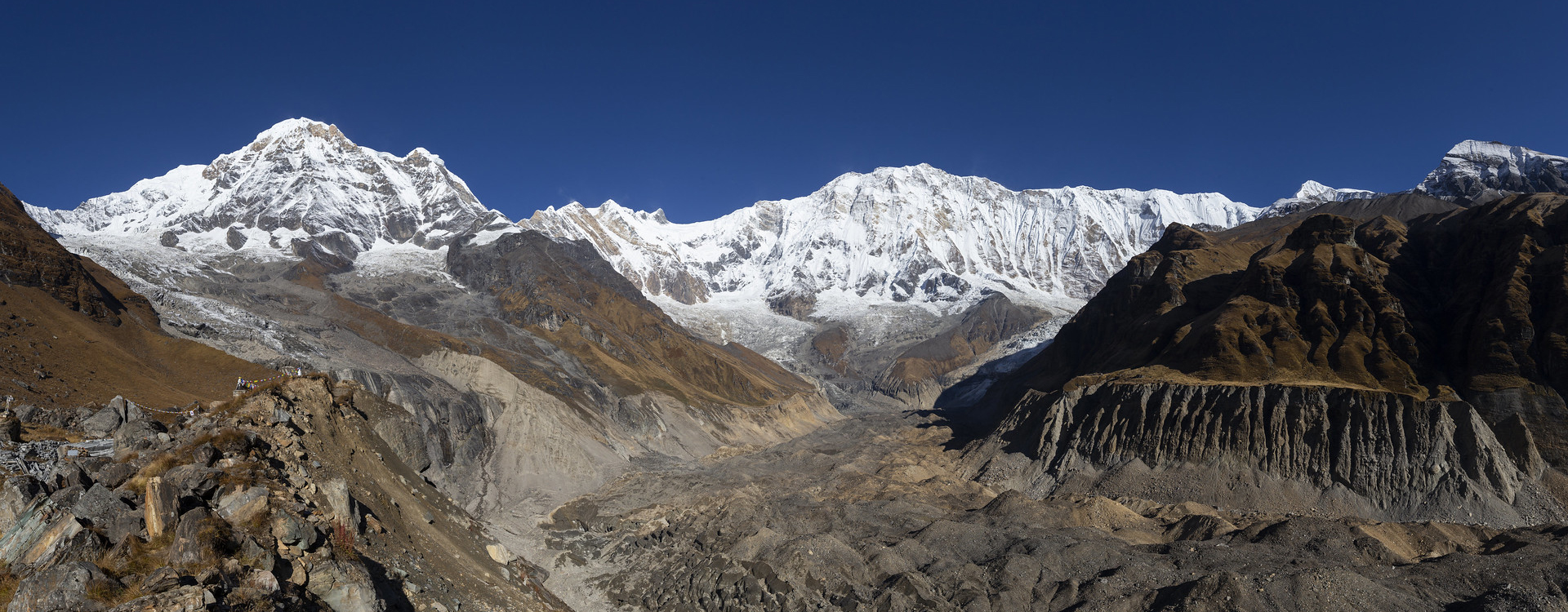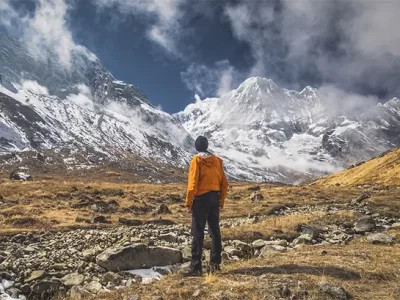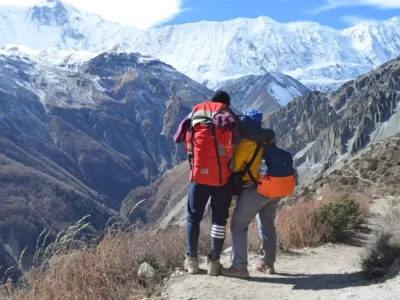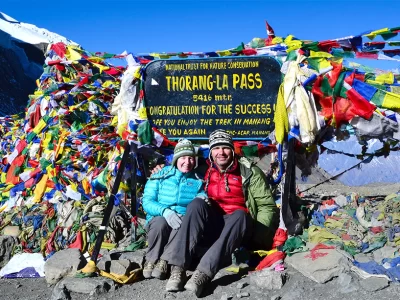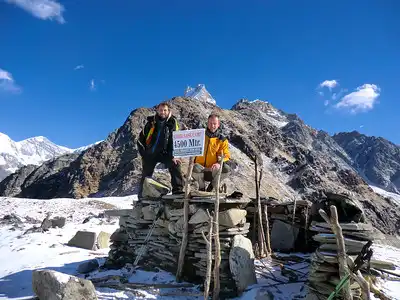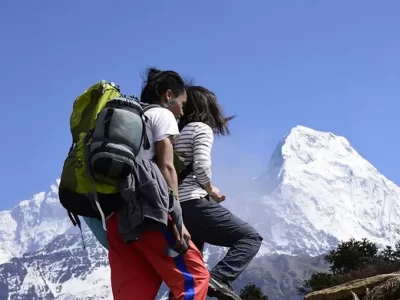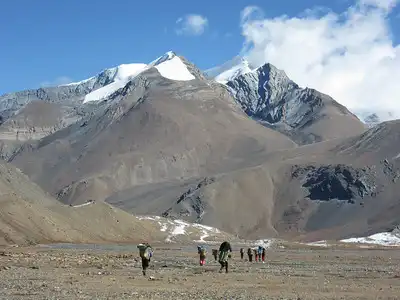The Annapurna Base Camp Trek offers a unique adventure, guiding you through the core of the Annapurna Sanctuary in Nepal. This moderately challenging trek culminates at the base of Annapurna I, the world’s tenth-highest peak, offering breathtaking panoramas of the Himalayas. The path meanders through varied terrains, from verdant valleys and tumbling waterfalls to yak pastures and glaciers at high altitudes. Selecting the best time for Annapurna Base Camp Trek is essential for a rewarding and pleasant trek.
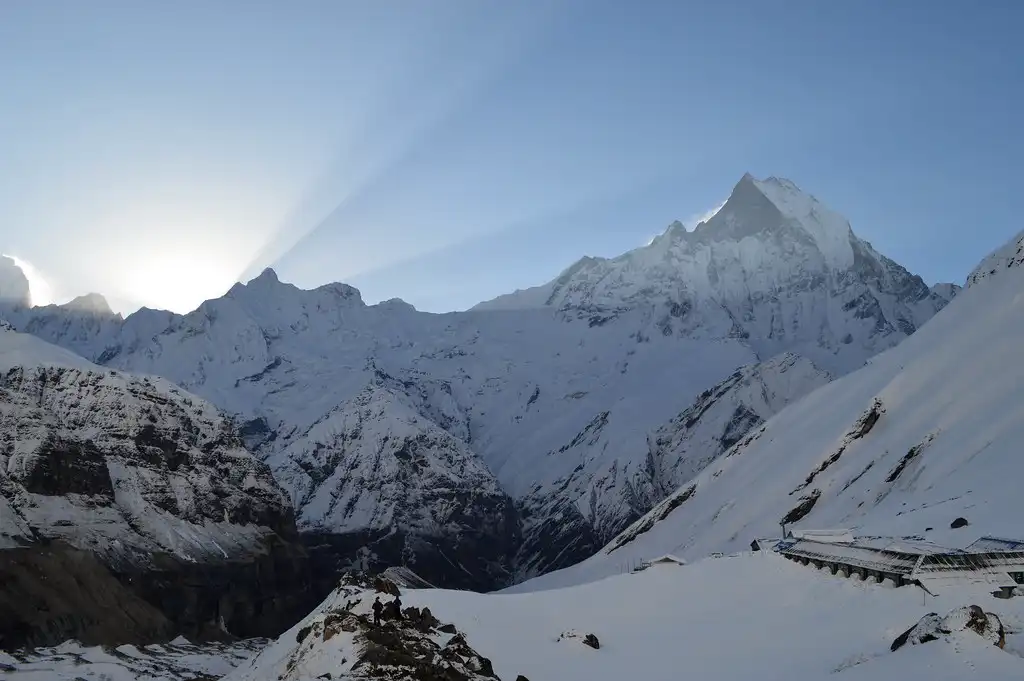
Throughout the year, weather conditions can change significantly, affecting visibility, temperatures, and the state of the trails. However, each season brings different experiences due to changing weather patterns. The cost of the trek also changes with the seasons. Prices are usually higher during the peak seasons because more people want to go. It is vital to understand these details for both financial and logistical planning.
The trek’s endpoint is the Annapurna Sanctuary. Local communities celebrate it for its incredible natural beauty and the sacred feeling it inspires. Trekking in the best season lets adventurers walk the trails more comfortably. They can avoid the monsoon rains and the winter snows. Careful planning not only makes the trek safer but also more pleasant. It allows trekkers to deeply connect with one of Nepal’s most valued natural settings.
Annapurna Base Camp Trek
Annapurna Circuit Trek
Mini Annapurna Circuit Trek
Understanding the Annapurna Region
Situated in central Nepal, the Annapurna Region exhibits remarkable geographic and climatic diversity. It stretches from lush subtropical lowlands to high, arid plateaus near the Tibetan border. It encompasses some of the highest peaks and deepest valleys in the world. Elevation greatly influences the climate, transitioning from warm and moist conditions in the lowlands to the cold, dry climate of the high Himalayas.
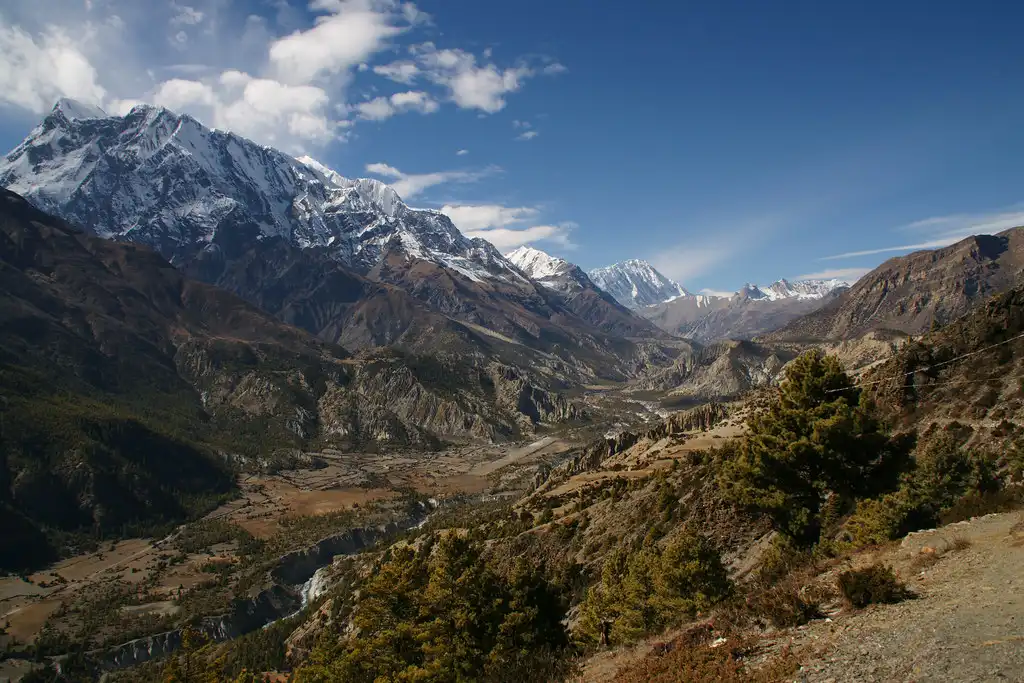
This diverse environment supports a unique variety of flora and fauna, establishing the Annapurna Region as a prime destination for naturalists and trekkers. Nepalese tourism heavily relies on trekking within the Annapurna Himalayas, attracting adventurers globally. The trekking routes in the Annapurna region, such as the renowned Annapurna Circuit and the secluded Nar Phu Valley, provide varied and enriching cultural and visual experiences.
These treks not only reveal the stunning beauty of the Himalayas but also offer insights into the lifestyles of rural Nepalese communities. The influx of trekkers significantly boosts local economies, playing a vital role in the development and sustainability of these remote areas.
So, let’s begin this trek to discover the best time for Annapurna Base Camp Trek:
Spring Season (March-June)
From March to May, Annapurna Base Camp features one of the best climates for trekking. Daytime temperatures at higher elevations stay within a comfortable range of 10°C to 20°C (50°F to 68°F).
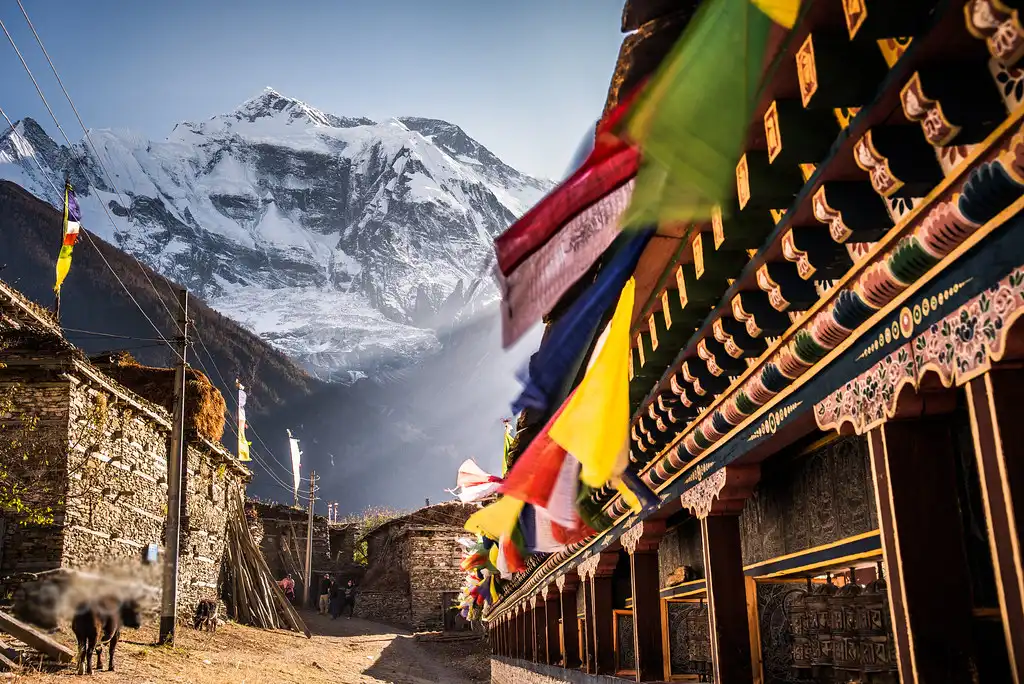
Nights are cool, but the harsh cold of winter has passed. As spring progresses, clear skies become more common, revealing breathtaking views of the Annapurna mountains.
Advantages of Trekking in Spring
- Flora: In spring, the paths burst into color as rhododendrons and other wildflowers bloom vibrantly across the landscape.
- Clear Skies: The days are often cloud-free, providing excellent visibility that is ideal for photographing the mountainous scenery.
- Wildlife: Rising temperatures bring a variety of wildlife to life, including numerous bird species and smaller mammals, making it a great season for animal enthusiasts.
Managing Crowds
Spring is a popular trekking season in Annapurna, and it attracts many visitors. Effective crowd management includes:
- Early Accommodation Booking: Booking lodges and teahouses in advance is essential to ensure availability.
- Early Starts: Departing early in the mornings can help you avoid crowded trails and enjoy more solitude, especially on busier paths.
- Patience: Expect crowds at major viewpoints and lodges and approach these situations with patience for a more enjoyable communal atmosphere.
Emergency and Helicopter Services
Spring’s stable weather generally reduces risks, but sudden changes can still occur, leading to situations like altitude sickness or injuries. Helicopter services are more readily available for quick evacuations due to the clearer conditions. You should obtain travel insurance that covers helicopter rescue and medical emergencies.
Trekker Volume
Spring sees a significant increase in the number of trekkers on the Annapurna Base Camp trail, starting in March and peaking through April and May. This season not only provides the clearest mountain views but also fosters a dynamic atmosphere on the trail, populated by both international visitors and local trekkers. It enhances the overall trekking experience.
Mardi Himal Trek
Ghorepani Poon Hill Trek
Dhaulagiri Trek
Monsoon (June to August)
From June to August, the monsoon season delivers substantial rainfall to the Annapurna region. Heavy showers typically occur in the afternoons, although mornings often remain clear.
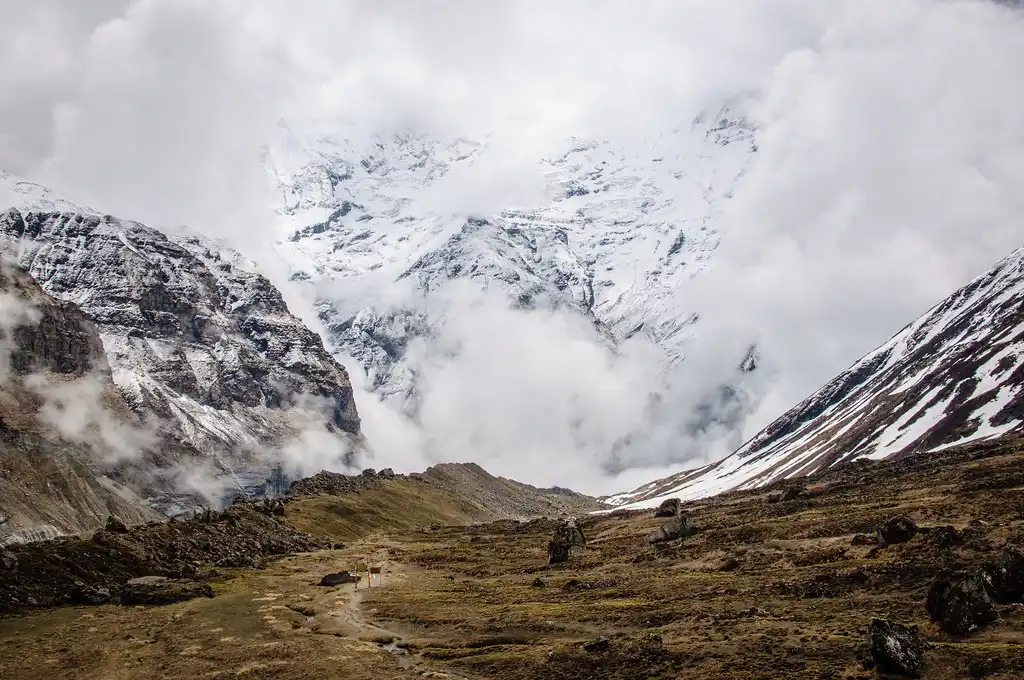
The air is humid, and temperatures hover between a comfortable 15°C to 25°C (59°F to 77°F). This consistent rainfall rejuvenates the landscape, making it lush and vibrant.
Challenges of Trekking During Monsoon
- Rain: The frequent, heavy rains during this period render the trails slippery and muddy, complicating trekking efforts.
- Leeches: Humid and wet conditions create an ideal environment for leeches, particularly troublesome in the trail’s lower sections.
- Landslides: Continuous rainfall increases the likelihood of landslides and rockfalls, particularly on steep slopes, posing additional hazards.
Benefits of Trekking in Monsoon
- Fewer Tourists: With fewer tourists on the trails, trekkers experience a more solitary trek.
- Lush Landscapes: The monsoon rains dramatically transform the environment, enhancing the greenery and filling waterfalls and rivers to their brim, creating stunning views.
Emergency Situations and Helicopter Services
During monsoon, heavy rainfall, fog, and clouds can restrict helicopter services, complicating emergency rescues. Managing emergencies like injuries, sudden illnesses, or severe weather becomes more difficult. Thorough preparation is essential for a successful trek. Consider hiring experienced guides who are well-versed in the local terrain and weather conditions.
Number of Trekkers
Trekker numbers drop significantly during the monsoon as the season’s challenges deter many. However, those who do trek during these months enjoy quiet trails and a distinctive monsoon atmosphere. Although challenging, this season can be exceptionally rewarding for those who are adequately prepared and seek adventure.
Autumn (September to November)
From September to November, autumn marks the optimal trekking season in the Annapurna region. The weather, characterized by minimal rainfall, brings dry and clear days.
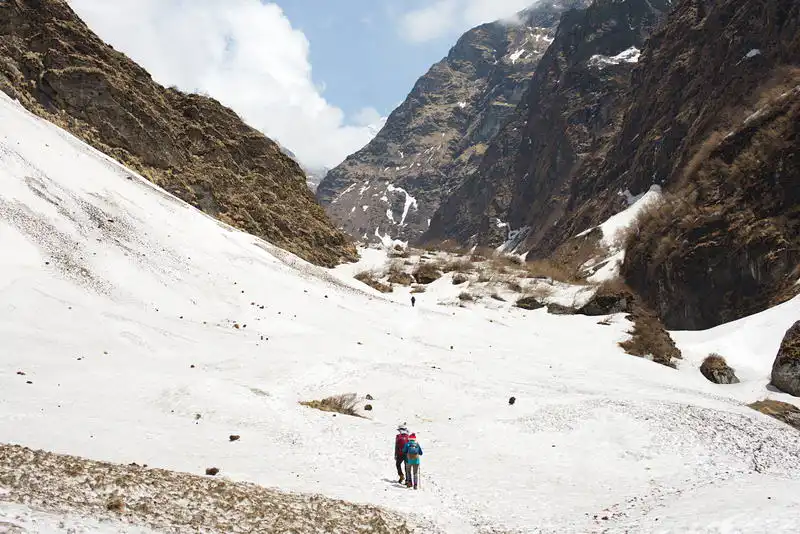
Cool temperatures prevail, ideal for extensive treks. Following the monsoon, the lush environment and clean air enhance visibility and add vibrancy to the scenery.
Benefits of Trekking in Autumn
- Excellent Weather: Autumn’s stable, dry climate creates perfect conditions for trekking.
- Clear Mountain Views: The air clears after the monsoon, revealing spectacular views of the Annapurna range and beyond. It provides some of the year’s best visual experiences.
- Major Festivals: During this season, trekkers can experience major Nepali festivals like Dashain and Tihar. Celebrations fill villages and towns with decorations, events, and activities, enriching the cultural experience.
Need for Advance Booking
Autumn’s excellent trekking conditions draw large crowds, making it a peak season at Annapurna Base Camp. High demand for lodges and guide services makes early booking essential:
- Accommodations: To ensure lodging, booking several months ahead is wise as places fill up fast.
- Guides and Porters: Booking guides and porters in advance is crucial, as the best are often secured well before the trekking season begins.
Emergencies and Helicopter Services
Although autumn weather is generally favorable, unexpected weather changes can occur, sometimes leading to altitude sickness or accidents. Thanks to clear skies, helicopter rescue services operate efficiently, providing a vital safety net. Securing travel insurance that includes emergency coverage would be best for quick and effective responses.
Number of Trekkers
Visitor numbers soar during autumn, peaking from late September to November at Annapurna Base Camp. The trail becomes lively with activity, adding to the trekking experience. The season’s popularity necessitates early planning and booking to manage the crowded paths effectively.
Winter (December to February)
Throughout December to February, temperatures at Annapurna Base Camp drop sharply, often falling below freezing, especially during nighttime and at higher altitudes. These months bring frequent snowfalls, which blanket the landscape in a brilliant white, particularly noticeable in January and February. Although sunny days prevail, the accompanying cold and reduced daylight hours restrict trekking time.
Advantages of Trekking in Winter
- Fewer Crowds: As most trekkers choose warmer months, winter provides a quieter and more secluded trail experience, perfect for those seeking peace and solitude.
- Beautiful Snowscapes: Snow covers the mountains, forests, and paths, creating breathtaking and surreal scenes ideal for photographers.
Disadvantages of Trekking in Winter
- Colder Temperatures: Trekkers must equip themselves with thermal clothing, low-temperature-rated sleeping bags, and adequate layers to withstand the sub-zero conditions.
- Accessibility Issues: Snow accumulation can make trails slippery or entirely obscured, heightening the risk of falls. Certain routes might also become blocked, and the risk of avalanches adds to the trek’s hazards.
Emergency Situations and Helicopter Services
Winter’s clear skies can suddenly shift to severe weather, including snowstorms and dense fogs, which may lead to emergencies such as hypothermia, frostbite, or navigational challenges. Helicopter rescues are available but may face operational challenges due to poor visibility and extreme weather conditions. Trekkers must obtain comprehensive travel insurance that covers high-altitude trekking and emergency helicopter evacuations.
Number of Trekkers
The winter season sees far fewer trekkers at Annapurna Base Camp than during spring and autumn. This reduced crowd can offer a more personal and reflective trekking experience. However, it also means that many services and teahouses might scale back or shut down, requiring trekkers to depend heavily on their preparation and self-sufficiency. This level of solitude is attractive but demands great preparation and self-reliance.
Is spring the best time for the ABC trek?
Indeed, spring stands out as an ideal season for the Annapurna Base Camp trek. The season brings warm days and clear skies, with temperatures that are comfortable for hiking, neither too hot nor too cold.
Trekking is safer and more pleasurable in the springtime due to the less slippery trails caused by the dry weather.
Can I trek to Annapurna base camp during the monsoon?
It is possible to trek to Annapurna Base Camp in the rainy season, but there are unique obstacles to overcome.
The monsoon season’s advantage is the decreased number of trekkers. Trekkers should still be ready for possible landslides, damp and muggy weather, aircraft delays, and decreased visibility from frequent downpours and cloud cover.
Careful planning and precaution are necessary for those opting to trek during this season.
What is the best time to trek at Annapurna Base Camp?
The optimal seasons for trekking to Annapurna Base Camp are Spring (March, April, May, June) and Autumn (late September, October, November).
During spring, trekkers can relish clear skies, pleasant temperatures, and the vibrant blossoms of rhododendrons.
In autumn, the weather remains steady, offering unobstructed views and comfortable temperatures. These periods provide the most favorable and enjoyable conditions for the trek.
The ideal period for your Annapurna Base Camp trip will depend on your interests, degree of expertise, and readiness to appreciate the distinctive qualities of each season.
Regardless of the chosen timeframe, thorough planning, proper preparation, and a profound admiration for the magnificent scenery and rich culture of the area ensure a memorable and fulfilling adventure.
Conclusion
Trekkers find the Spring (March to June) and Autumn (late September to November) seasons to be the ideal times for the Annapurna Base Camp trek. Spring offers clear skies, comfortable temperatures, and blooming rhododendrons, while autumn provides steady weather with unobstructed views and pleasant temperatures.
However, each season presents its allure and challenges. So, we would like to encourage readers to plan their trek according to their preferences, level of experience, and readiness. Regardless of the chosen season, thorough planning, proper preparation, and a deep appreciation for the stunning beauty and culture of the region ensure a memorable and fulfilling adventure.
